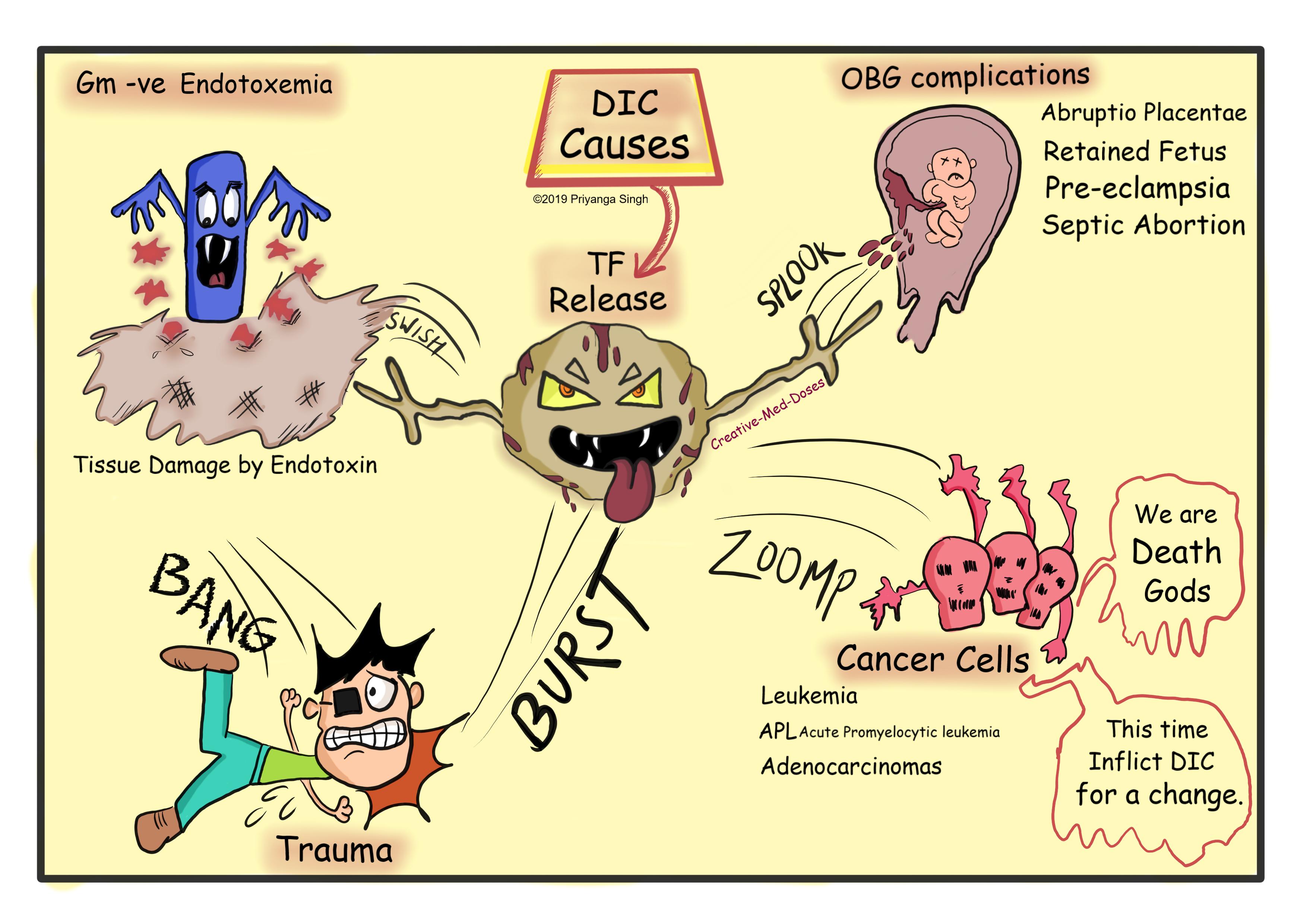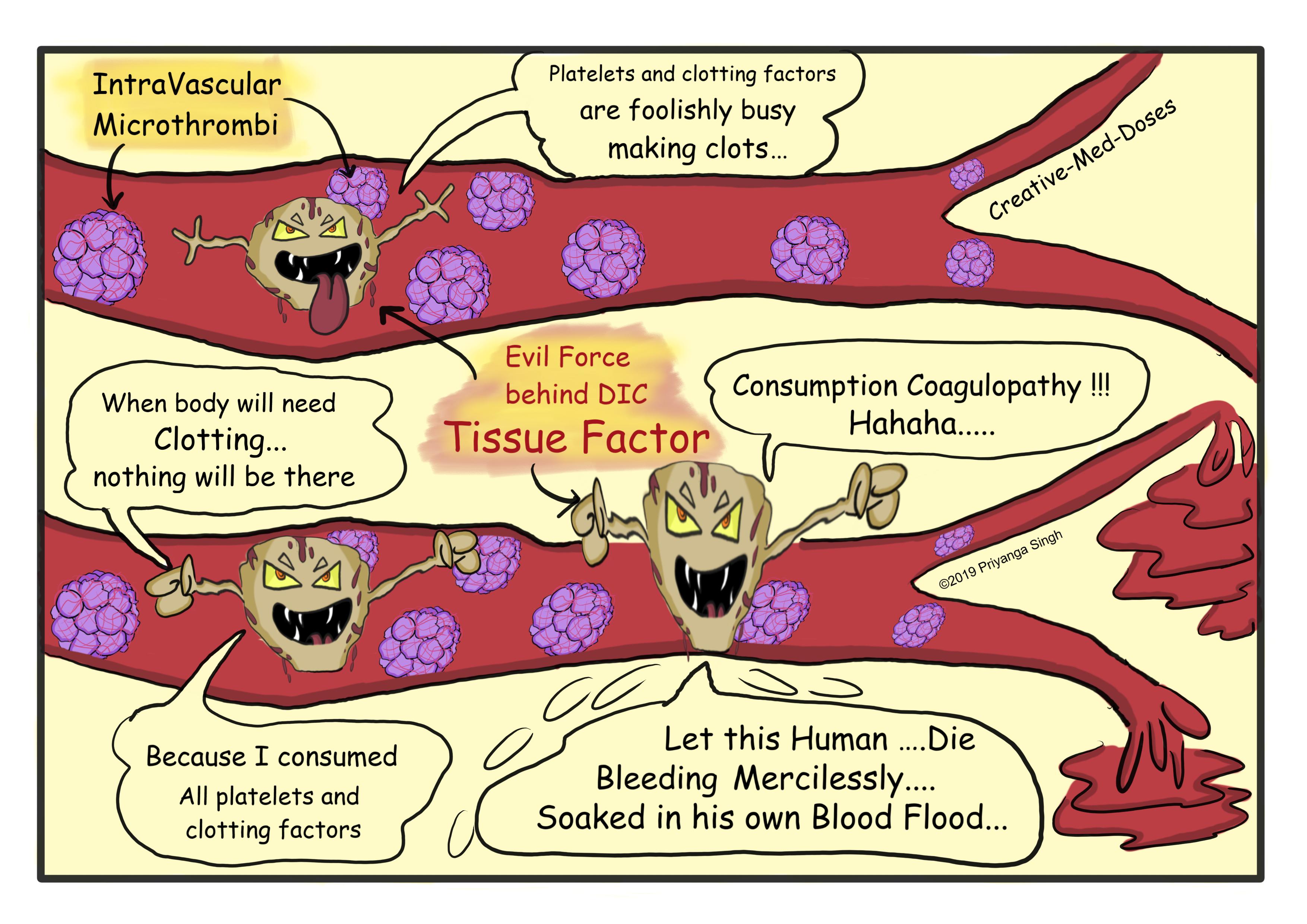Disseminated Intravascular Coagulation
Hi brainy folks, DIC (Disseminated Intravascular Coagulation) is a condition where early diagnosis and prompt treatment can be life saving. Decoding DIC today 😊…. disseminated (all over the place) intravascular (within the blood vessels) coagulation (blood clots).

What are the causes?
Release of tissue factor is first step of coagulation cascade initiation. There are four important risk factors associated with tissue factor release.
- Obstetric and Gynecologic complications
- Trauma
- Cancer
- Gram Negative endotoxemia
Mechanism- There are multiple microthrombi in blood vessels and the process of making overwhelming number of microthrombi consumes all raw material for blood clot formation (platelets, clotting factors etc.) hence it is also called consumption coagulopathy. Once platelets start to drop rapidly and there are no clotting factors, body starts to bleed from places for example IV lines, nose, vagina, under the skin (ecchymoses and easy bruising).

Diagnosis- FDP (Fibrin degradation products) and D-dimer for confirmation of diagnosis, Schistocytes are also seen in peripheral smear.
Treatment-
Treat underlying cause, for gram negative infection give antibiotics, and remove dead fetus and retained placenta.
Replacement of consumed products – platelet rich plasma, fresh frozen plasma and clotting factors are transfused as soon as diagnosis is made.
If patient presented with clotting symptoms, like Deep Vein Thrombosis and Pulmonary Embolism give anticoagulants.
Further reading https://www.ncbi.nlm.nih.gov/pmc/articles/PMC4260307/

Case scenario: 😎….
8-year-old boy presents with nausea and vomiting. He has fever and shows signs of meningeal irritation. On physical examination abdominal rashes, ecchymosis and petechiae are noticed. Culture and microscopy of CSF confirmed gram negative cocci and diagnosis of meningococcal meningitis is made. Blood test revealed leukocytosis, reduced platelet count, increased prothrombin time, reduced fibrinogen and elevated fibrin degradation products.
What could be possible explanation for boy’s present condition? And suggested treatment?
#Revision is Must- Read amniotic fluid embolism https://creativemeddoses.com/topics-list/amniotic-fluid-embolism/